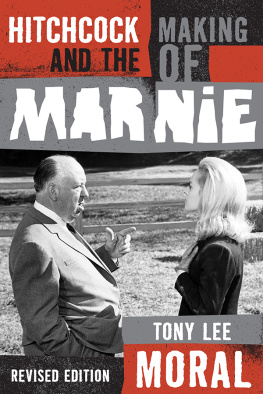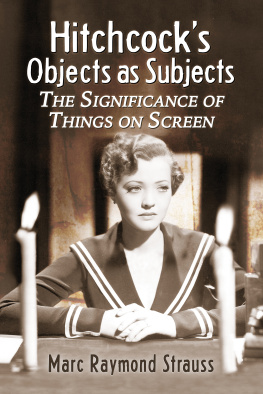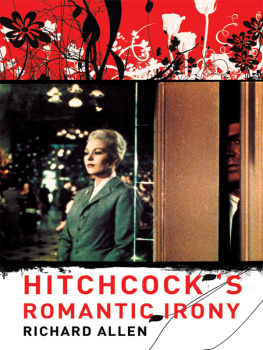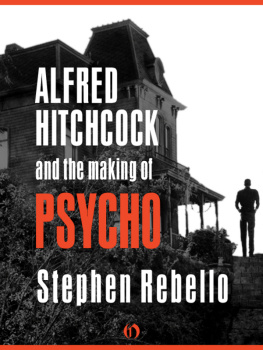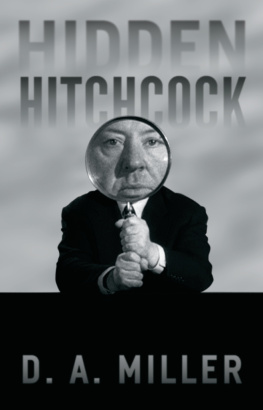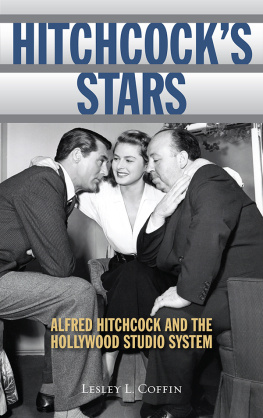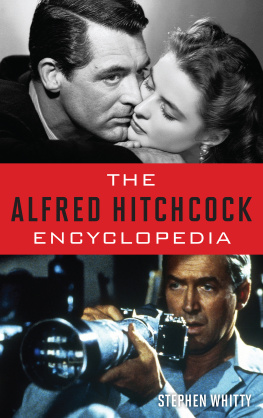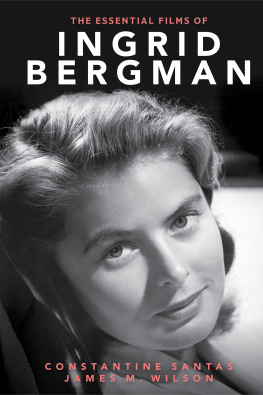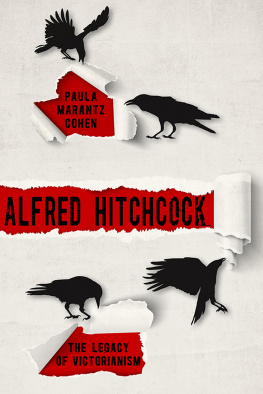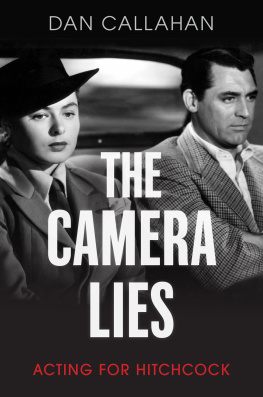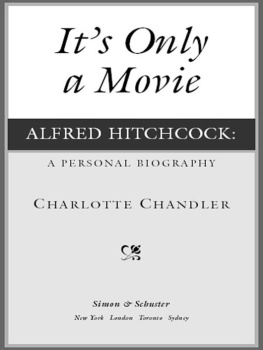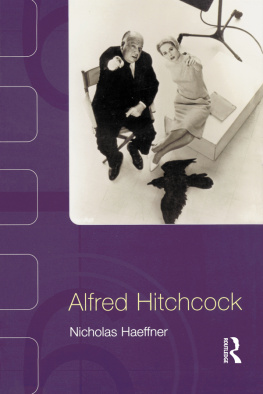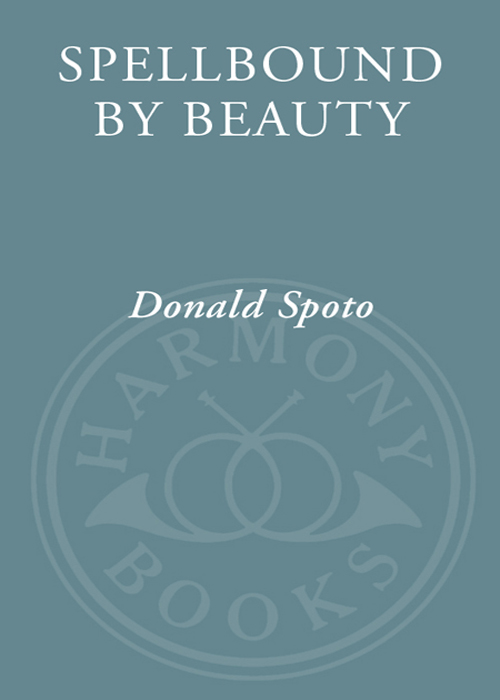

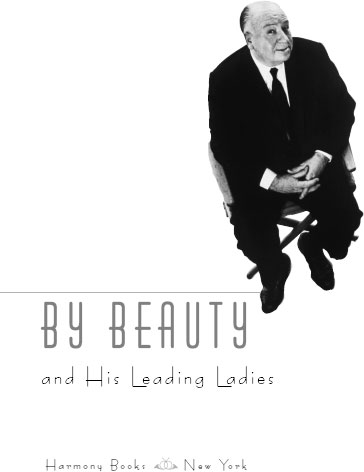
Contents
One
LOVE IN HANDCUFFS (19201926)
Two
OF SOUND AND SENSE (19261934)
Three
THE MASTERY OF MYSTERY (19341935)
Four
SHAKING THE DUST (19361938)
Five
PASSPORT TO HOLLYWOOD (19391940)
Six
CHILLING ELEGANCE (19411942)
Seven
FROM RAW STUFF TO POETRY (19431944)
Eight
DESIRES AND PULSATIONS (19451946)
Nine
BREAKING AND ENTERING (19471948)
Ten
THE LURE (19491950)
Eleven
ANNE, AND A YEAR OF GRACE (19511954)
Twelve
WOMEN WHO KNEW TOO MUCH (19541957)
Thirteen
NO ONE AT THE CENTER (19581960)
Fourteen
OBSESSION (19611962)
Fifteen
THE END OF ART (19631964)
Afterword
THE LEADEN ECHO AND THE GOLDEN ECHO (19641980)
For Mona and Karl Malden,
with grateful love and devotion
why are we so haggard at the heart,
so care-coiled, care-killedso cumbered,
when the thing we freely forfeit is kept with fonder a care,
fonder a care kept than we could have kept it
GERARD MANLEY HOPKINS,
The Leaden Echo and the Golden Echo (1882)
Acknowledgments
My first debt is to Alfred Hitchcock, with whom I spent many hours between 1975 and 1980. He granted me a number of taped interviews in which I found him astonishingly frank on important issues. He also invited me to lunch more than once, and during those times, the talk flowed very freely indeed.
Conversations with those who appeared in his films were of critical significance in the original preparations for both of my earlier booksThe Art of Alfred Hitchcock (1976) and The Dark Side of Genius: The Life of Alfred Hitchcock (1983). During the years of my research for those books (1974 through 1982), some people asked me to suppress certain material for a period of time, because of his recent death; in some cases, they asked that details not be set down during their own lifetimes. That explains some of the lacunae in my earlier work and further justifies Spellbound by Beauty: Alfred Hitchcock and His Leading Ladies.
I wish to acknowledge, therefore, interviews granted to me by the following actresses: Diane Baker, Anne Baxter, Ingrid Bergman, Karen Black, Doris Day, Joan Fontaine, Dolly Haas, Barbara Harris, Tippi Hedren, Grace Kelly (Princess Grace of Monaco), Janet Leigh, Margaret Lockwood, Vivien Merchant, Mildred Natwick, Claire Griswold Pollack, Elsie Randolph, Eva Marie Saint, Sylvia Sidney, Jessica Tandy, Ann Todd, Kathleen Tremaine, Alida Valli, Josephine Wilson (Lady Miles) and Teresa Wright.
A number of actors also cooperated generously: Brian Aherne, Martin Balsam, Hume Cronyn, Bruce Dern, William Devane, Jon Finch, John Forsythe, Barry Foster, John Gielgud, Farley Granger, Karl Malden, Lord Bernard Miles, Reggie Nalder, Paul Newman, Gregory Peck, Anthony Perkins, James Stewart and Rod Taylor.
Hitchcocks writers knew him in important ways others never could, for they sat with him for months and came to know how his prodigious mind worked. I was fortunate to have the confidence of Jay Presson Allen, Charles Bennett, David Freeman, John Michael Hayes, Evan Hunter, Arthur Laurents, Ernest Lehman, Brian Moore, Anthony Shaffer, Joseph Stefano and Samuel Taylor. Among Hitchcocks creative team, I also knew and interviewed Saul Bass, Henry Bumstead, Herbert Coleman, Edith Head, Peggy Robertson, Leonard South and Albert Whitlock.
The original idea for this book sprang from conversations with two of my closest friends, Gerald Pinciss and Lewis Falb. They have enthusiastically endorsed my writing for many years.
Once again, my brother-in-law, John Mller, dispatched the difficult creative task of transferring photographs onto disks. John is not only a talented designer but also a superb technician, and I am grateful for his generous allotment of time on behalf of this book.
Claus Kjr and his colleagues at the Danish Film Institute, Copenhagen, have welcomed me warmly to that prestigious archive and film library, and they have graciously invited me to be a frequent guest lecturer at the Cinematek. I am very happy in my ongoing association with the DFI.
For over thirty years, I have been represented by my friend Elaine Markson, whose name evokes respect, admiration and affection in the world of international publishing. In her New York office, I am supported by the practical help and abiding friendship of Elaines associates Gary Johnson, Geri Thoma and Julia Kenny.
Once more, I am very fortunate to be published by Shaye Areheart at Harmony Booksa perceptive, generous, and wise friend with an unerring sense of a books development. And my editor has again been the gifted and gracious Julia Pastore, whose creative contributions to my work I very much cherish. In her office, Kate Kennedy has cheerfully dispatched many daily tasks and has been, like Shaye and Julia, consistently helpful. No writer could ask for a better publishing team.
Ole Flemming Larsen, with whom I share my life, gives me more, every day, than I can ever deserve.
With enormous gratitude and devotion, I dedicate this book to my dear friends Mona and Karl Malden. Their presence in my life, and their loving endorsement of me and my work, mean more than I can say.
D. S.
Sjlland, Denmark
January 2008
Preface
The book you are holding is my third volume on the life and work of the great director. The first, The Art of Alfred Hitchcock, is an analysis and critical appreciation of each of his films; it was originally published in English in 1976, during the directors lifetime and after I had interviewed him on several occasions. I was very gratified when he celebrated and promoted the book, which is still in print, and in many languages. My second volume, The Dark Side of Genius: The Life of Alfred Hitchcock, appeared in 1983, three years after his death; it, too, is still available and has appeared in several dozen foreign-language editions.
Why, then, another book, with specific reference to the director and his actresses?
First, because it is remarkable how infrequently, over a period of more than fifty years, Hitchcock said anythingmuch less something favorableabout his players. His most repeated remark about them became a famous personal motto: Actors are cattle, or, more puckishly, I never said actors are cattleI said that actors should be treated like cattle. Actors and audiences laughed together at this, but behind the sardonic statement was the undeniable fact that while he knew he needed good and attractive talent to draw audiences and so to guarantee the commercial success of his movies, he seems to have had no great opinion of actors, and he often openly resented their stardom, privileges and salaries. Actors! I hate the sight of them! he cried in one unusually bitter fit of pique.
Hitchcock rarely had anything to say about his male starsestimable performers such as John Gielgud, Michael Redgrave, Laurence Olivier, Cary Grant, James Stewart, Sean Connery and Paul Newman, who were established in their careers when they came to work for him. Many of his leading ladies, on the other hand, achieved international stardom precisely because of their Hitchcock rolesMadeleine Carroll, Joan Fontaine, Grace Kelly, Janet Leigh and Tippi Hedren are good examples. That he maintained an insistent silence about the quality of their performances is a curiosity that cannot be ignored.
Next page

